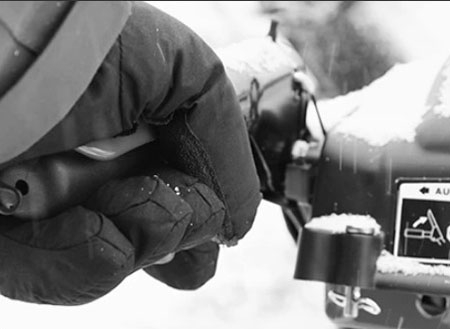As winter activities get into full swing, finger injuries reign abundant. Between basketballs jamming fingers, skiers injuring thumbs, and snow blowers lacerating anything that comes too close, the opportunity to sustain an injury to one of those precious digits is all around. These injuries are already flooding into our clinics in both Pewaukee and Mukwonago. We recognize that fingers are pretty gosh darn important for daily activity. How will you reach into your stocking? Never fear, we are here to help!
One of the most finicky finger injuries is the dreaded mallet finger. This occurs when force is applied to the end of a straight finger and forces it downward, which then ruptures the extensor tendon that assists in controlling motion. The result is a finger that will not completely straighten. Sometimes, when the tendon ruptures, it pulls a little piece of bone off with it; thus, making it an avulsion fracture. This may seem like such a small injury to endure, but I can assure you that the recommended treatment is infuriating. Your board-certified hand-specialist here at Orthopaedic Associates of Wisconsin will likely recommend non-surgical management of the injury to include continuous splinting for a minimum of six to eight weeks to allow the tendon to scar back down and function properly once again. The tricky part of this treatment is that if you remove the splint at any point without continuing to stabilize your finger, the healing clock starts back at zero. Ooof. It seems like a lot of work for a finger, but fully functioning fingers are imperative for normal daily life. In rare cases, your surgeon may recommend surgical management if a large piece of bone avulsed or if ruptured tendon pulled the bones comprising the joint out of alignment. Regardless of treatment regimen, this is an injury that can heal well and allow full finger motion once again.
As people start hitting the slopes, skier’s thumb injuries are common. This injury occurs when the thumb sustains a direct blow that forces it away from the palm of the hand (i.e. falling with pole in hand while skiing that black diamond). Most often, the area around the base of the thumb will be bruised, swollen, and sore, and the thumb will lack grip strength and ability. This is a soft tissue injury where the ligament that helps stabilize the joint is damaged. If completely torn, your surgeon may recommend reconstructive surgery. If it is a partial tear, likely nonsurgical management will commence including a brief period of immobilization prior to gradual and controlled progressive motion. This injury won’t keep you off the slopes forever. You could be back to skiing in April if Mother Nature graces us once again.
Snow blowers are another common cause of finger injuries during Wisconsin winters. Please don’t forget to turn off your snow blower and wait for the engine to COMPLETELY shut down before trying to fix the problem. Snow blowers lacerate, partially amputate, and completely amputate fingers every winter. Sometimes those lacerations and partial amputations are accompanied by fractures to the distal aspect of the finger as well. The treatment for snow blower injuries is usually focused on wound care while the laceration heals or wound care and protection while the flesh surrounding the partial amputation recovers. Often times, the injured area is particularly sensitive and uncomfortable while this healing occurs. Soft tissue can be slow to heal, and you may need help clearing snow for a while. Eventually, and sometimes with the help of some occupational therapy, you will be back to pushing snow blowers once again. Shovels work too!
If winter activities threaten the well-being of your fingers, come see us at Orthopaedic Associates of Wisconsin where one of our board-certified hand specialists will take good care of you and your digits!

